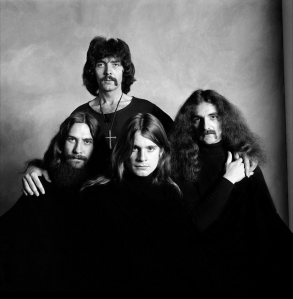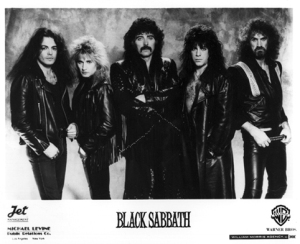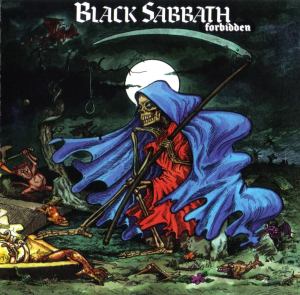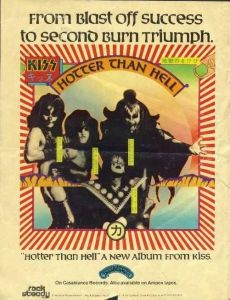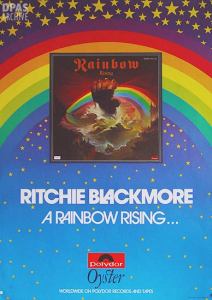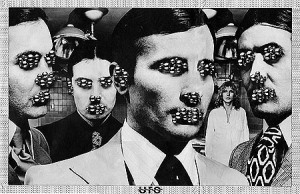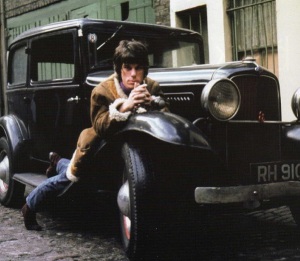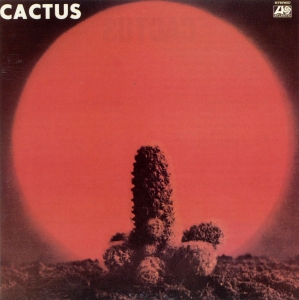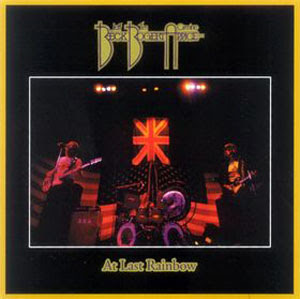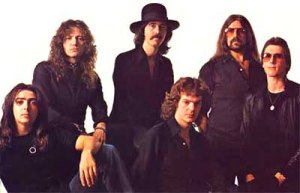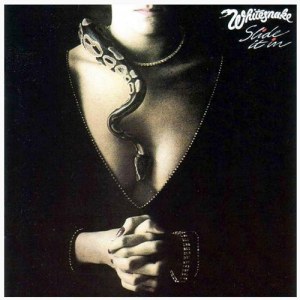Tony Iommi, living legend. Metal pioneer. Riff machine. Cancer survivor. Solely responsible for keeping the greatest Heavy Metal band of all time, Black Sabbath, alive for 45 years, withstanding decades of changing musical trends and never-ending line-up changes. But is this last bit something we should applaud Iommi for? Looking over Sabbath’s long history and vast body of work, how much of it really lives up to the legacy? Can Black Sabbath even be called a ‘band’ after 1983? Do half of these records even qualify as ‘Black Sabbath’ records?
Let’s start the discussion with something we can all agree on: Those first 6 albums are untouchable. Every one of them should form the core of any self-respecting metalhead’s music collection. They are the reason that the name ‘Black Sabbath’ will be among the few 20th century music artists that will be remembered hundreds of years in the future. Is this not a fact? Is there anyone out there that would argue this?
We can debate about ‘Technical Ecstasy’ and ‘Never Say Die!’; both are often included when discussing Sabbath’s unquestionable classics, as both feature the band’s original/classic line-up. But there is no consensus of opinion on these 2 albums, and fact that their relative worth is constantly debated means that there is significant doubt about their status in the Sab’s discography.
We may also argue about the Dio era, especially since the line-up that included Vinnie Appice on drums actually dropped Black Sabbath name and began calling themselves ‘Heaven and Hell’ in 2006. Some fans think a name change should have come with the release of the ‘Heaven and Hell’ album in 1979; changing it in 2006 created an interesting conundrum… Is ‘Mob Rules’ a Heaven and Hell album? Is ‘The Devil You Know’ a Black Sabbath album? Shades of grey abound.
Perhaps even more questionable is 1983’s ‘Born Again’, an album that both Iommi and Geezer Butler claim was not originally intended to be released as a Black Sabbath album. So BA carries with it some controversy, but is now seen by most as just as worthy of the Black Sabbath name as the 2 that came before it. However, having arrived at ‘Born Again’, and taking a look back at those unquestionable Original Six, one can see clearly just how far off track we have drifted. That said, I still include ‘Born Again’ in the larger discussion of ‘legit’ Sabbath albums, in fact, for me it is the final album by Black Sabbath proper.
The post-‘Born Again’ Sabbath story is a fucking circus, with Tony Iommi the Ringmaster. After Gillan and Butler departed, American singer David Donato was hired and demos were recorded, with Bob Ezrin producing. A Black Sabbath album produced by the producer of Kiss’ ‘Destroyer’, Pink Floyd’s ‘The Wall’, and all of Alice Cooper’s classic albums would likely have been amazing, regardless of who Iommi had in the line-up at the time. Alas, this all led to …nothing. Donato did an interview with Kerrang! as Sabbath’s new lead vocalist, before he was officially hired… and was promptly fired.
Iommi planned his next project as a solo album, but the suits at Warner Brothers insisted it be released under the Black Sabbath banner. Despite the ploy, we all know better, and the ‘Seventh Star’ album is now widely acknowledged as an Iommi solo record, no matter what’s printed on the sleeve or CD insert. Moreover, all five of the ‘Tony Martin Era’ albums that followed are also Iommi solo albums. Aren’t they? When the musicians who contribute to an album aren’t properly credited; when the recording line-up is different than the touring line-up, and when the list of players in your ‘band’ changes each album/year in an never-ending revolving door of musicians, putting even Rainbow to shame… That’s not a band. So let’s call these records what they are: solo albums.
Another Deep Purple singer, Glenn Hughes sang on ‘Seventh Star’, but was fired 5 dates into the world tour and replaced by the unknown Ray Gillen. That’s Gillen with an ‘E’. Eric Singer and Dave ‘The Beast’ Spitz played drums and bass. That Spitz gets to forever promote himself as a ‘former member of Black Sabbath’ simply because Warners forced the Sabbath name onto the record irks me to no end. And what’s the real difference between ‘Seventh Star’ and the five ‘Black Sabbath’ albums that followed? Not much.
Spitz was replaced by Bob Daisley after the first sessions for the next album ‘The Eternal Idol’. Daisley also wrote the album’s lyrics, but Ray Gillen quit shortly after recording them. New recruit Tony Martin then recorded new vocal tracks. Bev Bevan and Geezer Butler returned to the band for the tour, but Butler quit after learning that the band were booked to play in South Africa (wtf?), and was replaced by Jo Burt. Then Bevan was out, swiftly replaced by former Clash drummer Terry Chimes…! As I said, fucking circus. ‘The Eternal Idol’ would be the last ‘Black Sabbath’ album for both Warner Brothers and Vertigo, as the labels dropped the ‘band’ after 18 years. It would be the last ‘Black Sabbath’ record released on a major label for 25 years.
‘Headless Cross’ appeared in 1989 on I.R.S. Records. Chimes was out, Cozy Powell was in. Jo Burton was out, Lawrence Cottle was in, but only for the album; Neil Murray played bass on the tour. Murray stuck around for the next album, ‘TYR’, as did Powell and Martin. The album featured lyrics about Norse mythology; the cover featured Nordic runes that for some strange reason spell out ‘TMR’. Someone didn’t do their homework. Lyrics about Norse mythology? Hey, ‘Born Again’ haters: how you like me now?
in 1992, Geezer, Ronnie Dio and Vinnie Appice were coaxed back into the fold, reuniting the 1982 ‘Mob Rules’ line-up for ‘Dehumanizer’. Thankfully, this record breathed a little life into the tired Sabbath carcass with a pile of strong songs and a successful tour. ‘Dehumanizer’ entered the UK Top Forty and hit #44 in the US. But is this the 16th Black Sabbath album? Or is it the second ‘Heaven and Hell’ album?
Ronnie Dio left again, after refusing to appear with Sabbath as support for Ozzy Osbourne’s two ‘final’ shows in November; Dio called Ozzy a ‘clown’ and quit. This turn of events led to Rob Halford, who had just recently departed Judas Priest, being drafted at the last minute to sing both sets. Everyone involved acknowledges that there was talk of Halford joining the band permanently. How amazing would that have been? Halford fronting Sabbath, looking all Anton LaVey, with a vocal range the band’s previous few singers could only dream of… And he certainly would have nailed it in the lyrics department. But it didn’t happen; surely he was touched by Sharon Osbourne’s Hand of Doom. On the second of those two shows in Costa Mesa, Ward, Butler and Iommi joined Ozzy at the end of his set and played four songs as Black Sabbath. And this led to …absolutely nothing.
Iommi assembled yet another line-up, finally convincing Geezer to stick around and reactivating Tony Martin. Bobby Rondinelli was hired on as drummer. ‘Cross Purposes’ featured cover art blatantly stolen from Scorpions’ ‘Send me an Angel’ single from three years earlier. As the Sabbath circus lurched through 1994, Rondinelli quit and was replaced by Bill Ward for the final five shows of the tour. Immediately after the tour ended, Geezer left again, forming GZR; their debut album contained a song called ‘Giving up the Ghost’, which featured the following lyrics:
“You plagiarized and parodied the magic of our meaning/A legend in your own mind, left all your friends behind/You can’t admit that you’re wrong, the spirit is dead and gone”
Ward also quit. Iommi called Cozy Powell and Neil Murray back, which resulted in a reunion of the ‘TYR’ line-up (yay?). But none could foresee that right around the corner lurked the worst nightmare ever conjured under the name of Black Sabbath… ‘Forbidden’.
Some context: The mid-’90s were not exactly kind to ‘old school’ metal bands. I’ve written previously about the struggles of bands such as Iron Maiden and Judas Priest in this time period, and steering the SS Sabbath through these Grunge-infested waters couldn’t have been easy. The sad truth is, in the late 80s and throughout the 90s, several bands were utilizing the classic Sabbath sound, at times sounding more like Black Sabbath than Iommi’s ‘Black Sabbath’ records did. Corrosion of Conformity, Trouble, Electric Wizard, Cathedral, Candlemass, and others all clearly worshipped at the altar of the Original Six, while Iommi seemed stuck on plodding rehashes of ‘Heaven and Hell’.
By the time of ‘Forbidden’, Iommi had tired of keeping the Sabbath flag flying single-handedly and was eager to take get a full-on Black Sabbath reunion underway. A return to the original Sabbath line-up had been in the planning stages since Ozzy’s 1992’s Costa Mesa gigs, but Iommi was obligated to deliver one more album to I.R.S. The label knew it would be their last chance to do business with the prestigious Black Sabbath name and were ready to take some chances.
Everyone involved in this debacle should have known better. ‘Rap Sabbath’? Seriously?? The band were summoned to London for a meeting to discuss the direction of the album. Iommi was told that Sabbath needed to regain some street cred, get hip with the times, and other such bullshit. Ernie C., guitarist for Body Count, the infamous ‘metal’ band fronted by hip hop icon Ice-T, was drafted in as producer for ‘Forbidden’. That the record sounds awful is of secondary concern. The real issue here is that the the song that opens the album, ‘The Illusion of Power’, features a rap by Ice-T. Here it is again in all caps: THE SONG THAT OPENS THE ALBUM, ‘THE ILLUSION OF POWER’, FEATURES A RAP BY ICE-T. Even Tony Martin raps/speaks his verses in the song. It’s godawful. And it’s only the first song…
After the Forbidden tour, Iommi was, once again, the last Sab standing. Since recording ‘Born Again’ in 1983, Iommi had burned through 6 drummers, 6 bass players, and 5 singers. The fact is that Ozzy Osbourne, ‘solo artist’, had more changes in his line-up between 1983 and 1995 than Black Sabbath, the ‘band’. Take that, Blackmore! Rather than gather another bunch of hired hands (who was left? Rudy Sarzo? Tommy Aldridge? Oh no, no, please God help me!) he wisely opted to put the Sabbath name on hold and until the inevitable reunion. You know, the reunion that started coming together at the Costa Mesa gigs in 1992; the reunion that, according to Iommi’s book, ‘Iron Man’, was being ‘managed’ by Sharon Osbourne?
Here’s how a snapshot of Sharon’s ‘management strategy’: After the band first reunited for Ozzy’s ‘final shows’, six years passed before the original Black Sabbath met with Rick Rubin to discuss an album and then entered the studio to write new material… but Sharon put everything on hold so she could turn her husband into a clown on TV. Ronnie Dio warned us of the danger! Because making herself a TV star by whoring out her family and presenting Ozzy to the world as a mindless drug-addled idiot was more important than a new Black Sabbath album. So talking, planning and writing was as close as we ever got.
Today, 17 years later, we’re no closer. In fact, at this point, it may never happen. The Dio-era line-up, reunited as Heaven and Hell, wrote 3 new songs for a comp, then recorded a new album, and toured the world twice, all in just 4 years. Sharon has had 23 years to put a reunion together with all four original members of Black Sabbath. The original Black Sabbath only worked together for 8 of those years, and under Sharon’s ‘management’ were only able to produce one proper tour, a few jaunts as part of Ozzfest, one live album, and one recording of one new song. It’s almost as if she’s been working to prevent a reunion from ever happening. Hmm…
To my mind, the epic Black Sabbath run can be broken into three distinct ‘eras’: the ‘Original Six/Subsequent Six’ era, the ‘Tony Iommi Solo Albums’ era, and the ‘Sharon Osbourne-Controlled, Utterly Fruitless, Nearly-Twenty-Year, So-Called Reunion’ era. That third period is the longest of the three. Thirty years after ‘Never Say Die!’; I’m thinking that, all things considered, maybe it would’ve been OK to say ‘Die’ after all.
